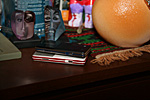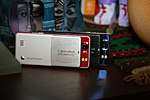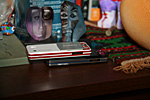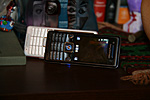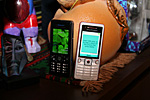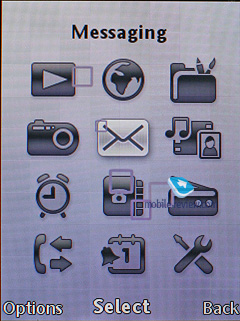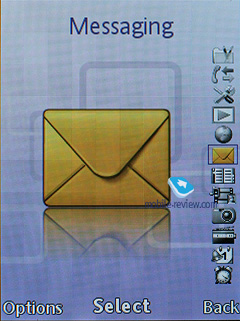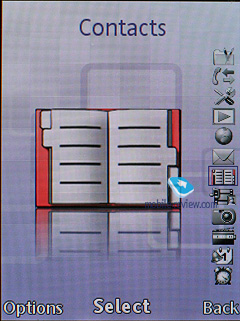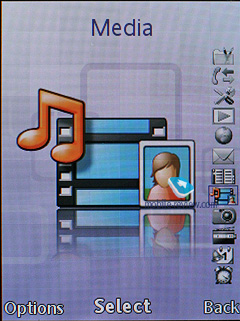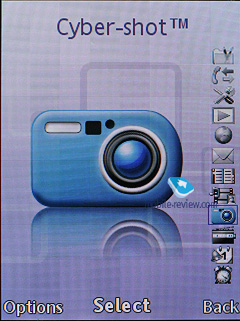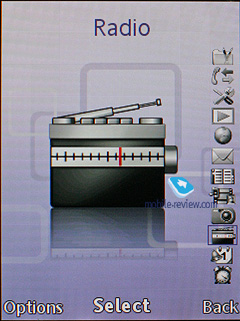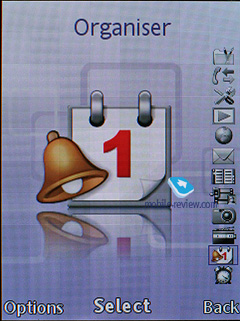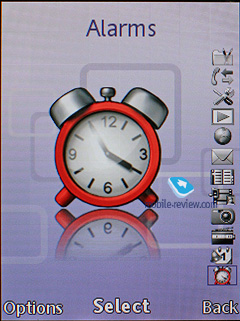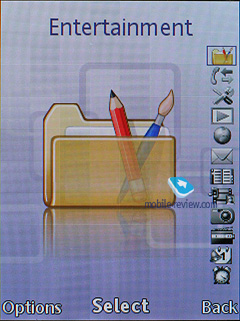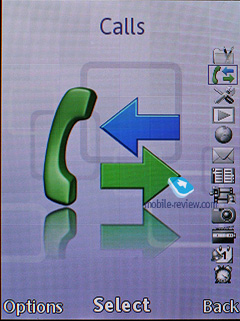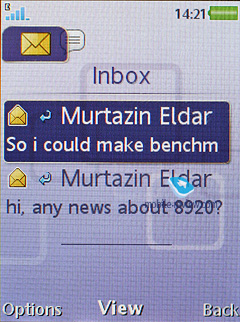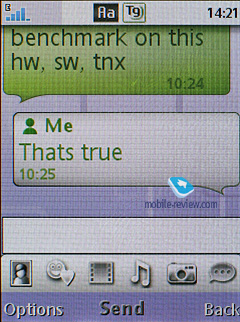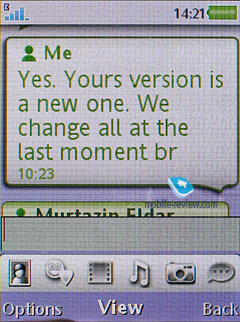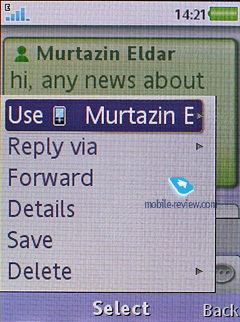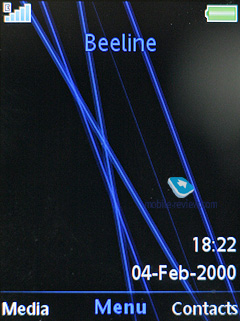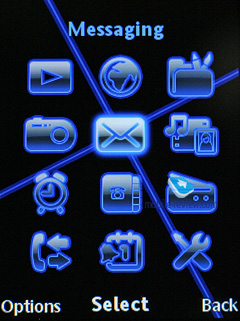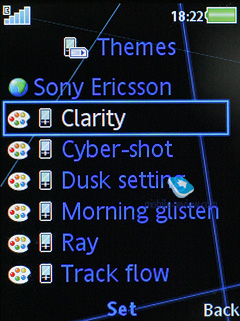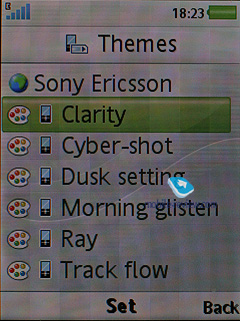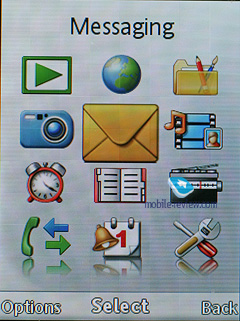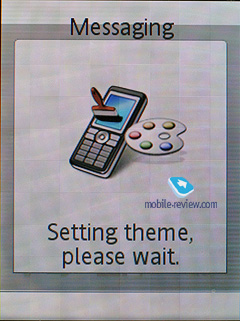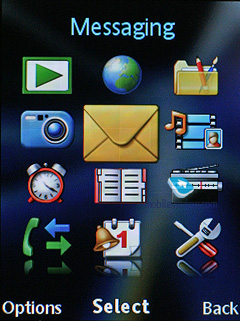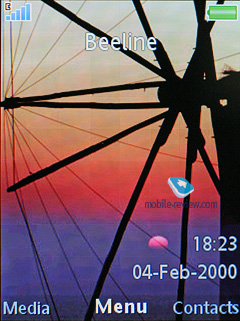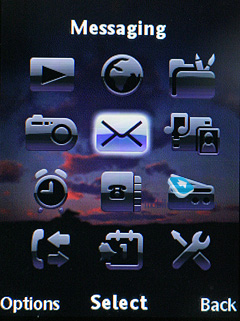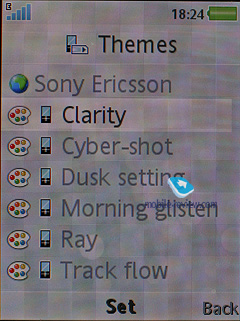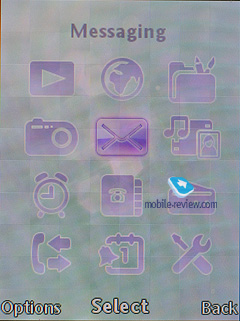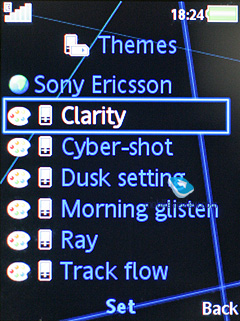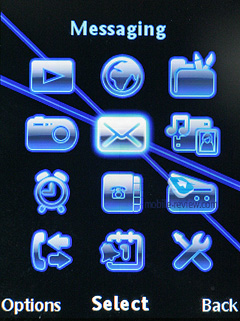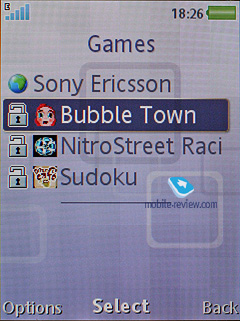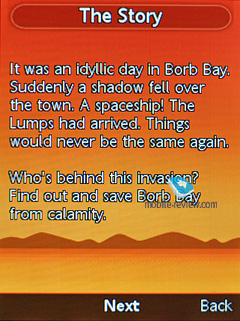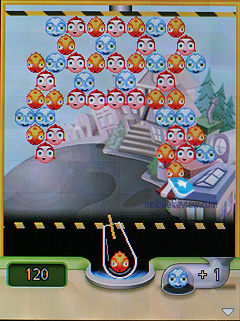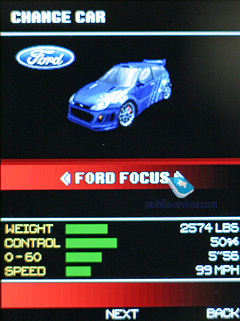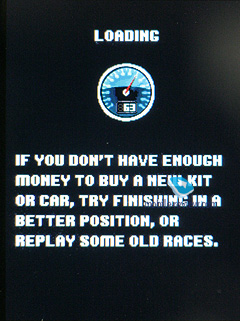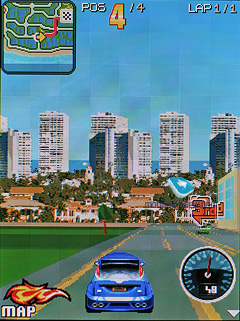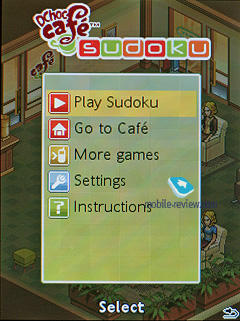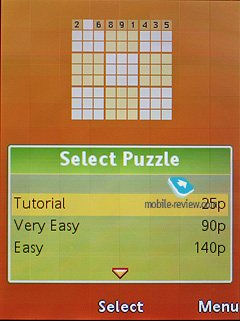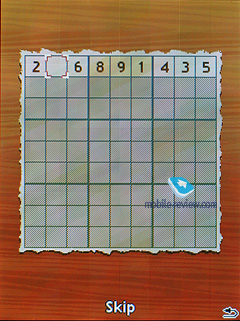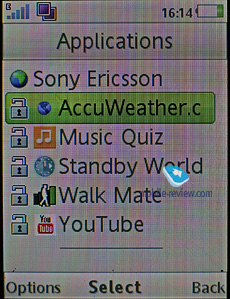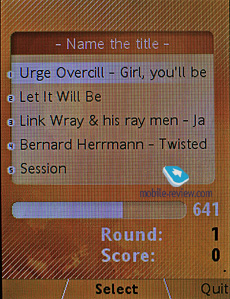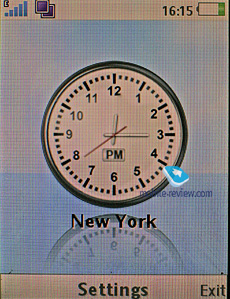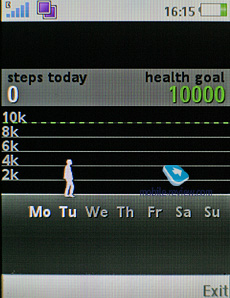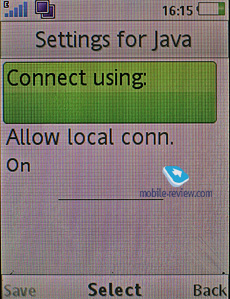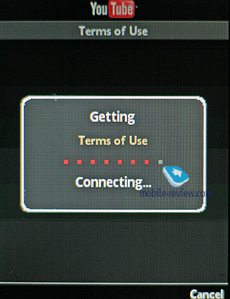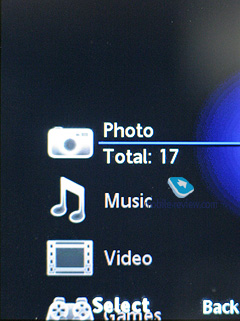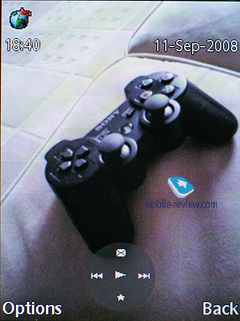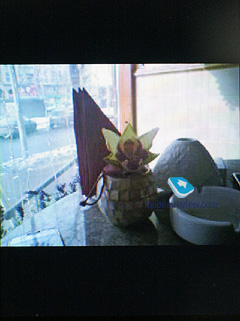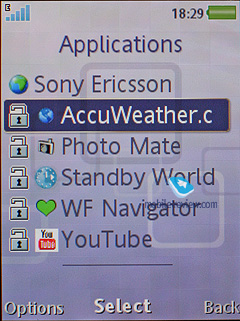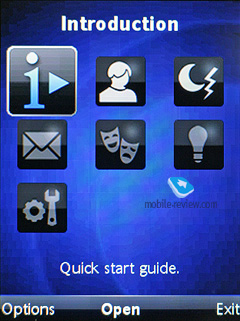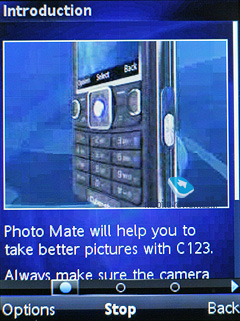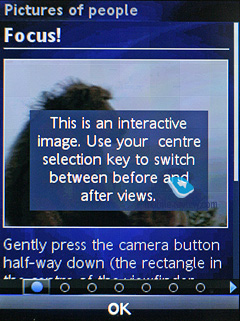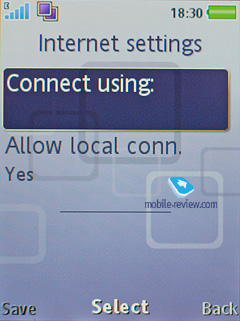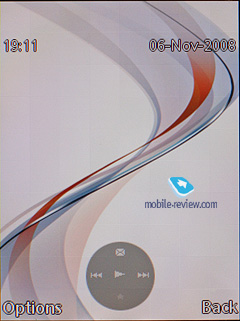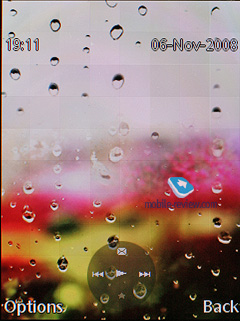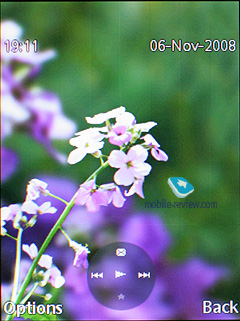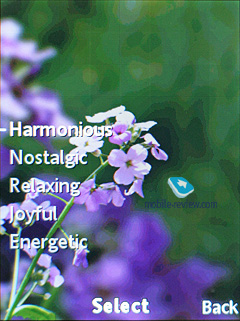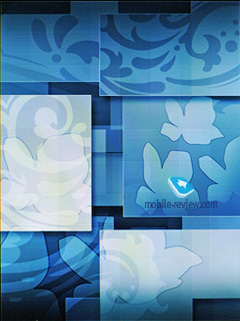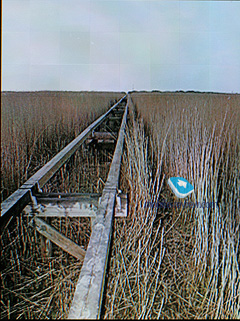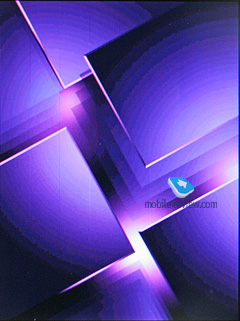|
|
Review of GSM/UMTS-handset Sony Ericsson C510
Live photos of Sony Ericsson C510
Table of contents:
- Positioning
- Design, Size, Controls
- Display
- Keypad
- Battery
- Connectivity
- Memory, Memory cards
- Performance
- Camera
- Preinstalled applications, games, themes
- Competition
- Impressions
Sales package
- Handset
- Charger
- Battery (BST-38)
- 1Gb M2 memory card (size may vary)
- USB data cable
- Wired stereo-headset
- User Guide
Positioning
In the framework of “CyberShot” line-up, the C510 is supposed to be the most affordable solution in there, in other words, a true imaging-savvy phone for the mass-market. And it does have all the makings of one – user interface centered on the phone’s camera, lens cover and other useful amenities. To keep it in line with the rest of the portfolio, they’ve given it the looks of one of the most sought-after CyberShot branded phones to date, the C902; although, obviously, the cheaper model sports the least sophisticated materials and it does feel inferior to the latter in terms of plastic quality (although still looks very similar to the C902).
Sony Ericsson C902:

Sony Ericsson K770:

Sony Ericsson C510:


Deliberately or not, many tend to overlook the phone the C510 really comes to replace – the Sony Ericsson K770i, whose performance on the market early on was hampered by the availability of Sony Ericsson K800i and K810, although as it went though a number of price drops, it became one of the most appealing offerings in its segment, furthermore, as far as imaging-centric phones were concerned, the K770i turned into one of the most successful solutions of that time. So, in reality, bearing a very similar price tag, the Sony Ericsson C510 is a skin-deep update of the K770i – the software hasn’t changed much, nor has its positioning or camera. Normally new phones go for a tad more than the models they are designed to replace, but that’s not the case with these two, which should make the C510 quite affordable from the get go and also let Sony Ericsson maintain the momentum they gathered with the K770i. Although in all fairness its price tag should be even lighter given the current market tendencies, Sony Ericsson are going after higher margins, so they aren’t aiming to flood the market with it, however with time it will become one of the key offerings in their portfolio.
Back to the table of contents >>>
Design, Size, Controls
Much like the K770i, the brand new Sony Ericsson C510 is made of plastic with two chromed inserts housed on the sides and the battery cover coated in soft touch plastic. While its build quality is fine for the most part, the phone tends to creak a little when squeezed, which is nothing to get paranoid about, though. Keeping in mind the problems we experienced with plastic quality in Sony Ericsson’s latest and greatest phones, we put the C510 through its paces in a whole array of tests – we carried it in one pocket with keys and change, tried to scratch it and rub it; but to no avail, as it didn’t seem particularly prone to wear and tear, furthermore, none of its parts loosened up over our quality time with the phone. The only weak spot we found on the C510 was its lens cover, because after all these experiments it didn’t feel quite as solid, although it didn’t give us any trouble at all and we still managed to seamlessly slide it open and closed without looking.
Video, looks, menu, user interface (wmv, 47,2 mb) >>>




The phone measures up at 107x47x12.5 mm and tips our scales at 92 grams, which is very close to the size of the K770, however the C510 has lost a couple of millimeters in girth, and gotten a bit more palm-friendly. Sitting above the display is the forward-facing camera for videoconferencing in 3G networks, while on the left-hand side there is the M2 memory card slot sealed by a flap that’s attached to the casing. Further up is Sony Ericsson’s standard multi-purpose connector. Housed on the right are the volume rocker, dedicated camera button and lanyard eyelet.






The Sony Ericsson C510 comes in a choice of two colors - Future Black and Radiation Silver. As you can see, we got a chance to play around with another color scheme (white-and-red) that is supposed to come along a tad later.
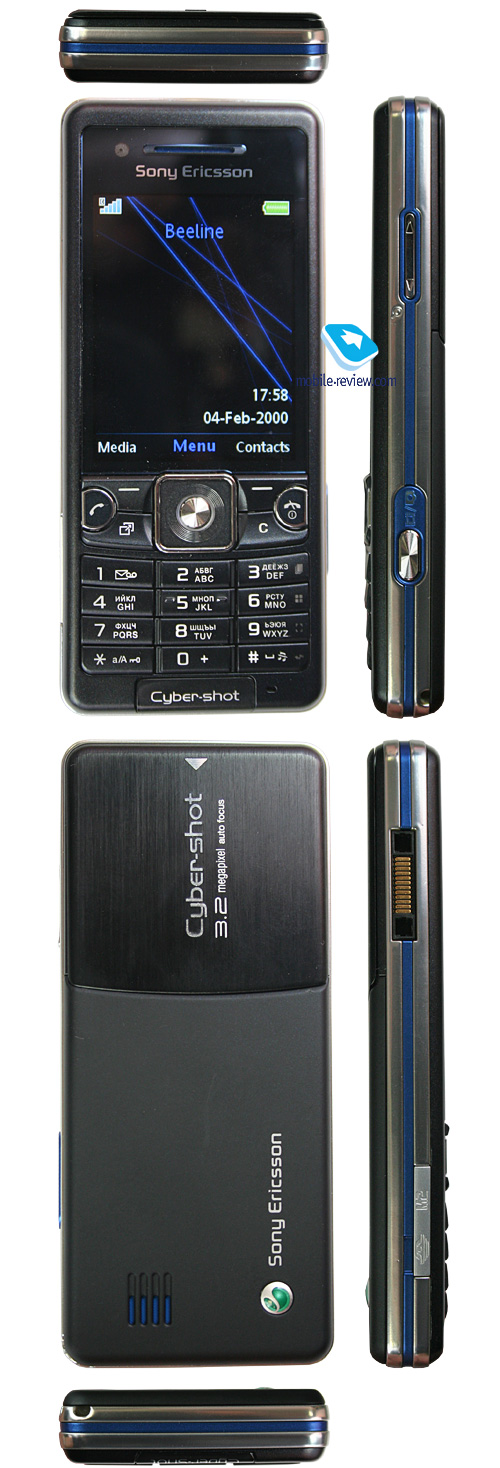
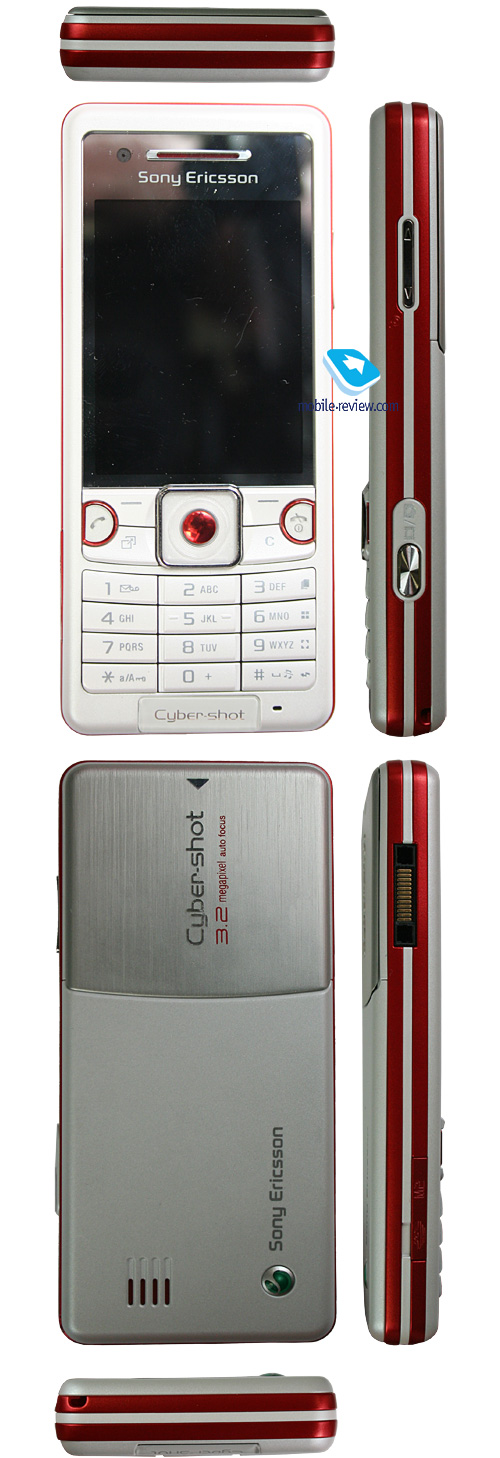
It’s hard to say which trim looks better – the no-nonsense black edition will suit just about everyone, while silver and other variants have a very distinctive youthful appeal. All in all, the C510’s colors are pretty eye-candy, although Sony Ericsson’s phones have never suffered from lack of good looking color schemes.


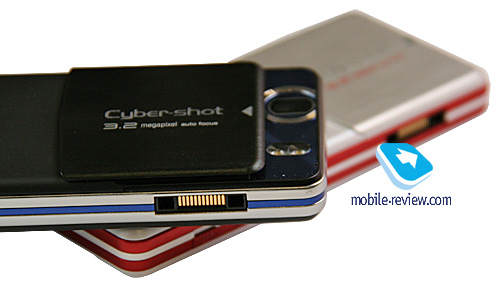
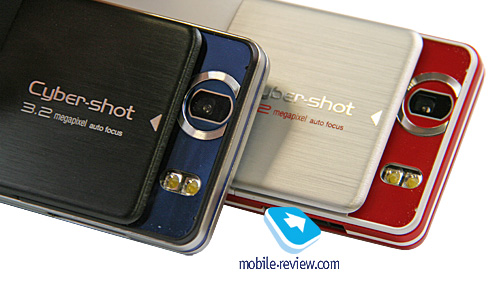

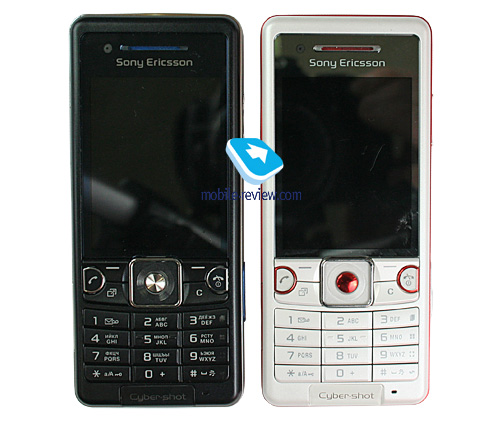
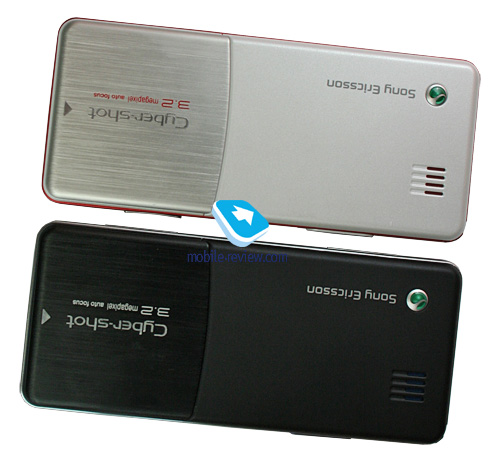
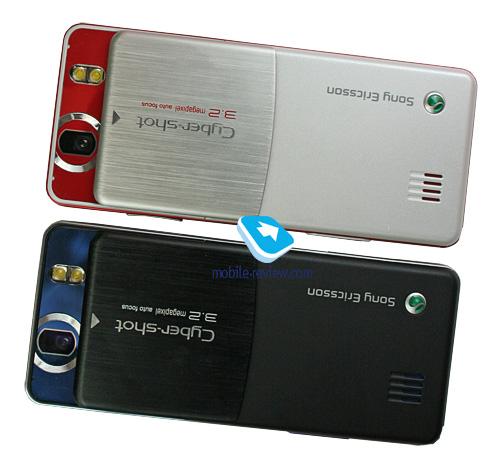
Back to the table of contents >>>
Display
The C510’s display shows up to 262 K colors in the 240x320 pixel resolution (2.2 inch diagonal, 34x46 mm, TFT). This screen size allows it to accommodate up to 8 text and 3 service lines in most modes (plus it’s possible to cram in more information when browsing Web or handling Email).

Similarly to other Sony Ericsson’s models, the C510’s display utilizes a mirror underlayer that improves its readability under direct sunlight and allows its picture to stay crisp and visible. The only thing we can fault it for is the smallish diagonal, while other specifications are quite decent.
The screen’s cover also seemed quite scratch-resistant, although we fault to figure what what material it was made of – it wasn’t glass like the one found on the Sony Ericsson T650, that’s for sure. Apart from that, the C510 comes bundled with a motion sensor that automatically re-aligns the picture depending on how you hold the phone and also kicks in in certain games.
Back to the table of contents >>>
Keypad
My first impression of the C510’s keypad was it felt remarkably similar to that of the Sony Ericsson K750i, so I decided to put them face to face and found out that the newcomer’s keys were definitely easier to use. While people with bigger fingers are likely to run into certain difficulties with this keypad, for it feels somewhat cramped, other than that working with the C510’s numberpad was a snap. The navigation key boasts a built-in blue light indicator; although this phone’s set of light effects not nearly as capable or impressive as that of the Sony Ericsson T650i. All keys are lit in bright white that keeps all symbols visible in pretty much any environment without blurring them out – below are a couple of pictures of both native and localized keypads, so that you can make sure.






The Call and End buttons are pretty tiny and are recessed into the casing on top of that, which makes it this much harder to tap them – occasionally we would smash the neighboring soft-keys instead of these two buttons, which was frustrating to say the least. However not everyone will experience the same kind of difficulties, so pay close attention to how the C510’s ergonomics work out for you before buying it.




Back to the table of contents >>>
Battery
The back cover firmly sits in its slot, and is easy to open. Removing it reveals a 930 mAh Li-Ion battery. As the maker claims, the C510 provides up to 400 hours of standby and up to 10 hours of talk time. In Moscow its battery life averaged three days with moderate use (up to 1 hour of calls, about 30 minutes of games and 20 minutes of browsing). Should you get heavier on its features, you will need to recharge it every day. And if you cut your total call time to the very minimum, the battery will stay up and running for about 3-4 days, but that’s an improbable scenario. Within the European networks the device will last for at least twice as long in all modes thanks to better coverage. Continuous music playback drains the battery in 18 hours. It takes the phone around 2 hours to charge from empty to full.

Back to the table of contents >>>
Connectivity
On USB-connection you are forced to pick connection type - specifically whether you will be accessing data stored on the memory card to just keep managing the phone or activate Print mode. Also there is Media Transfer (MTP mode for accessing, say, Windows Media Player). In the first mode we mentioned above the handset goes off and you gain access to the contents of both the memory card and the phone internal memory. Despite the maker claiming it to be USB 2.0, data transfer speed doesn't exceed 2 Mb/s. If you just want your C510 to turn into a modem, then pick the second option, when you will have a chance to play around with various USB settings for going online.
Bluetooth. The handset comes with EDR-enabled Bluetooth 2.0, the menu enables you to turn on enhanced power saving mode. There is also A2DP support, which allows employing wireless headsets with the C510. Its data transfer speed tops out at 100 Kb/s. The list of supported profiles:
- A2DP
- Basic Imaging Profile
- Basic Printing Profile
- Dial-Up Networking Profile
- File Transfer Profile
- Generic Access Profile
- Generic Object Exchange Profile
- Handsfree Profile
- Headset Profile
- HID
- JSR-82 Java API
- Object Push Profile
- Personal Area Network Profile
- Serial Port Profile
- Service Discovery Application Profile
- Synchronization Profile
- SyncML OBEX binding
Back to the table of contents >>>
Memory, Memory cards
The C510 comes with around 115 Mb of user-manageable memory, the sales package also includes a 1 Gb memory card (M2), and you can always hot swap them. The top size of your memory card this phone can handle is 8 Gb.
Back to the table of contents >>>
Performance
The performance is typical for company’s latest-gen device. Although the C510’s performance has dropped in the first two tests (compared to the competition), its 3D capabilities have received a significant boost. As far as JAR files go they can be of any size, while HEAP are limited to 1.5 Mb.
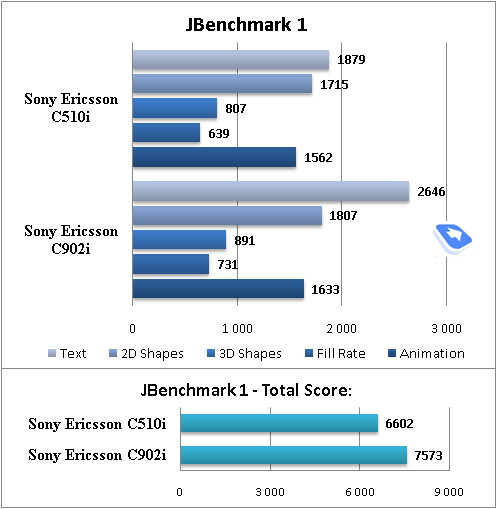
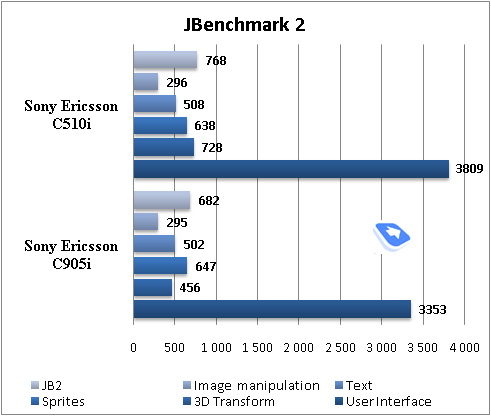
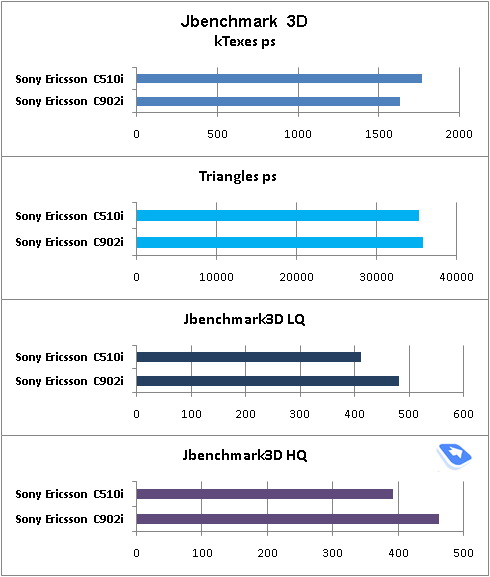
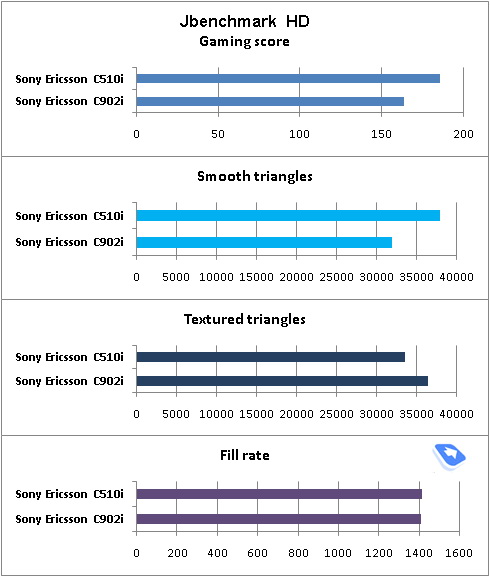
Back to the table of contents >>>
Camera
The C510 sports the 3.2 MP CMOS-matrix with autofocus feature which turns to be different from that implemented in the Sony Ericsson K790i/K800i, since the snaps quality is worse. The C510 also employs the CyberShot camera interface that you know so well from the previous devices.


The camera settings look as follows:
Shutter sound. You can choose on of the three shutter sounds but not turn the sound off.
White balance. A possibility to choose between an auto-mode, Incandescent, Fluorescent, Daylight.
Effects. Several effects may be applied to the photos, these are Negative, Solarize, Sepia, Black & White.
Timer is activated for a certain time period for self shooting.
Various shooting modes are in place. Night mode is for shooting in the dark. Noises raise on a photo, exposure time gets increased (you shouldn't move the device in order not to get a blurry photo).
Shooting mode. Normal mode; Multishot-mode (Burst 4) allows taking four image in a series. Landscape is a very interesting mode that enables you to snap pretty good looking images. And the last, but not the least is Frames mode, which should be pretty self-explanatory.
Geo-tagging in the C510 is done via Cell Id as it doesn’t have a bundled GPS receiver.
The screen serves as a viewfinder while in the shooting mode. The picture moves very smoothly, details don’t get dropped out. Numeric keys help in switching between various functions and shooting parameters quickly that significantly speeds up.
 |
 |
| (+) enlarge, 2048x1536, JPEG |
(+) enlarge, 2048x1536, JPEG |
 |
 |
| (+) enlarge, 2048x1536, JPEG |
(+) enlarge, 2048x1536, JPEG |
 |
 |
| (+) enlarge, 2048x1536, JPEG |
(+) enlarge, 2048x1536, JPEG |
 |
 |
| (+) enlarge, 2048x1536, JPEG |
(+) enlarge, 2048x1536, JPEG |
 |
 |
| (+) enlarge, 2048x1536, JPEG |
(+) enlarge, 2048x1536, JPEG |
 |
 |
| (+) enlarge, 2048x1536, JPEG |
(+) enlarge, 2048x1536, JPEG |
 |
 |
| (+) enlarge, 2048x1536, JPEG |
(+) enlarge, 2048x1536, JPEG |
 |
 |
| (+) enlarge, 2048x1536, JPEG |
(+) enlarge, 2048x1536, JPEG |
 |
 |
| (+) enlarge, 2048x1536, JPEG |
(+) enlarge, 2048x1536, JPEG |
 |
 |
| (+) enlarge, 2048x1536, JPEG |
(+) enlarge, 2048x1536, JPEG |
 |
 |
| (+) enlarge, 2048x1536, JPEG |
(+) enlarge, 2048x1536, JPEG |
 |
 |
| (+) enlarge, 2048x1536, JPEG |
(+) enlarge, 2048x1536, JPEG |
 |
 |
| (+) enlarge, 2048x1536, JPEG |
(+) enlarge, 2048x1536, JPEG |
Video
Video may be recorded in the 320x240 pixel resolution (mpeg4) at 30 FPS. Clip duration may be limited (up to 10 seconds) or unlimited. The C510’s videos are pretty average quality-wise, and as always, we’d like to have VGA resolution for videos. Alas, there is no such option.
Back to the table of contents >>>
Preinstalled applications, games, themes
We won't review the C510's standard feature pack, for it comprises all the goodies of the A200, which were given an in-depth close-up in a dedicated article. So here we will be focusing on the phone's unique abilities and features.
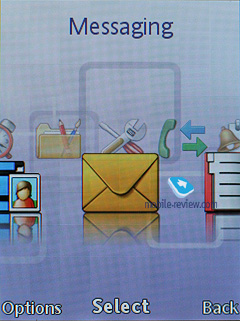
As far as improvements in the way of platform go, we can’t overlook the new Chat mode that’s now available in the Messaging menu – all you need to do is push the navigation key to the right to browse your chats with various contacts, where messages are grouped up by date. Apart from obvious visual appeal, this mode also allows for one click replies be it via an SMS, MMS or email. All in all, it’s a welcome feature that will become par for the course in many new phones.

The phone comes preinstalled with 6 different themes, all of them involving flash animation to some extent, and changing the looks of the main menu to a circle-shaped appearance or the matrix we are all used to. There are several menu layouts available: grid, rotating and icon.
The C510 ships with three games: Bubble Town, NitroStreetRacing and Sudoku.
The phone features a handful of default applications, including AccuWeather (allows getting up-to-the-minute weather forecasts) and Standby World (clock-shaped screensaver), Photo Mate (walks you though the phone’s imaging-related feature) and YouTube (allows browsing this service’s mobile version).
As far as multimedia feats are concerned, the C510 is a standard A200 fare - read more about it here.

Apart from the music player, the C510also packs in FM-radio.
Back to the table of contents >>>
Competition
The Sony Ericsson C510 goes up against a couple of other phones, including Sony Ericsson’s very own K770i that has a slightly less sophisticated software, doesn’t have the new Chat mode and only comes boxed with a 512 Mb memory card. Other than that it’s little to no different from the C510 and is 15-20 Euro cheaper at that. Also competing with the C510 is the Samsung U800, going for it are its metal casing and a comparable camera, although some of its other specs aren’t as good. If you closer your eyes to its imaging department and several other features, it becomes a fairly interesting choice, especially if you’re after a stylish and eye-candy phone.
Had Nokia not announced the 6303, we would have been forced to include only the Nokia 6300 into this comparison and it would have been in a pretty bad shape against the C510. But with the Nokia 6303 and Nokia 6700 out there, covering the price points both below and above that of the Sony Ericsson C510, they will give the latter a good run for its money. While Nokia doesn’t position its 6303 as an imaging-centric solution, it offers a wealth of other features and a 3.5 mm audio jack.
| |
Nokia 6303 |
Nokia 6300 |
Nokia 6700 |
SE C510 |
| Size, weight (mm, g) |
108.8x46.2x11.7, 96 |
106.4x43.6x13.1, 94 |
109.8x45x11.2, 116.5 |
107x47x12.5, 92 |
| Display |
QVGA, 2.2 inch, TFT, 16 mln colors |
QVGA, 2.2 inch, TFT, 16 mln colors |
QVGA, 2.2 inch, TFT, 16 mln colors, auto contrast adjustment |
QVGA, 2.2 inch, TFT, 262000 colors |
| Battery |
Li-Ion 1050 mAh |
Li-Ion 760 mAh |
Li-Ion 960 mAh |
Li-Pol 930 mAh |
| Memory (bundled/memory card/maximum capacity) |
64 Mb/1 Gb/4 Gb |
9 Mb/128 Mb/2 Gb |
170 Mb/1 Gb/16 Gb |
100 Mb/1 Gb/8 Gb |
| Camera |
3.2 MP, autofocus |
2 MP |
5 MP, autofocus |
3.2 MP, autofocus, lens cover |
| Bluetooth |
2.0+EDR |
2.0+EDR |
2.1+EDR |
2.0+EDR |
| Sockets |
microUSB, doesn’t charge over USB |
miniUSB doesn’t charge over USB |
microUSB charges over USB |
Fast Port |
| 3.5 mm audio jack |
Yes |
No |
No |
No |
| Materials |
Metal |
Metal |
Metal |
Plastic |
| Price |
135 Euro (May) |
135 Euro |
245 Euro (May) |
175-180 Euro (March) |
I believe this short breakdown requires no further explanation, but we’ll definitely get back to these phones some time in April or May to see how things will stand then. But it’s safe to say that Sony Ericsson have overvalued their brand yet again, which is indicated by the C510’s heftier-than-expected price tag.
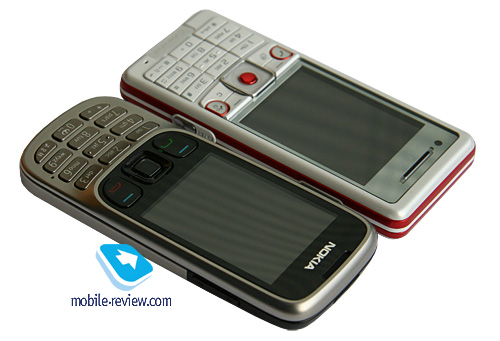
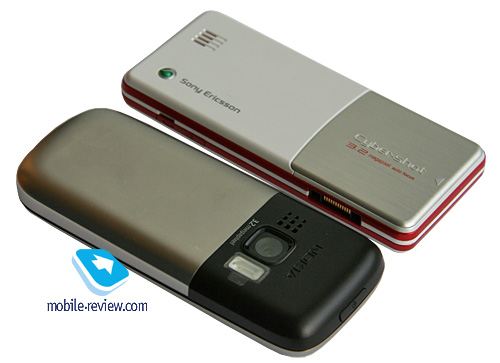
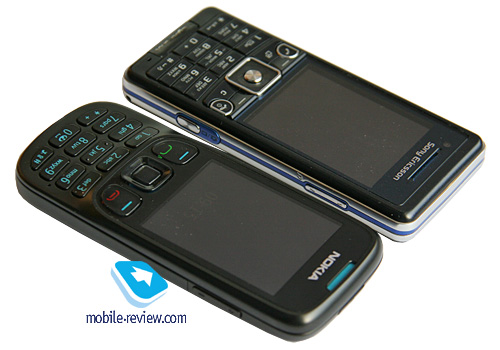
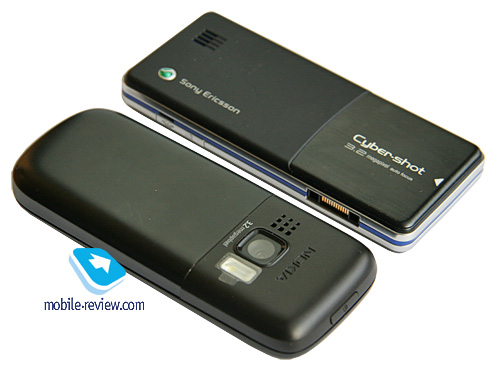
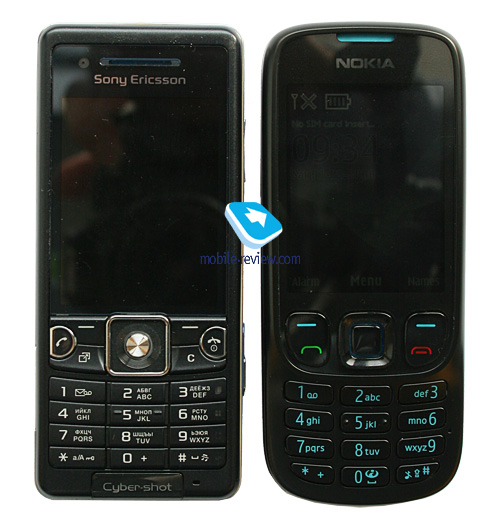
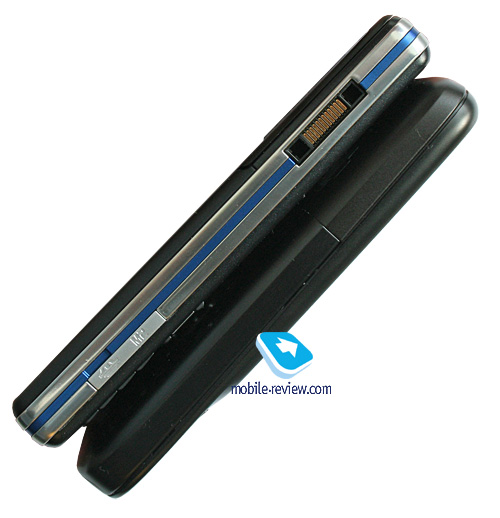
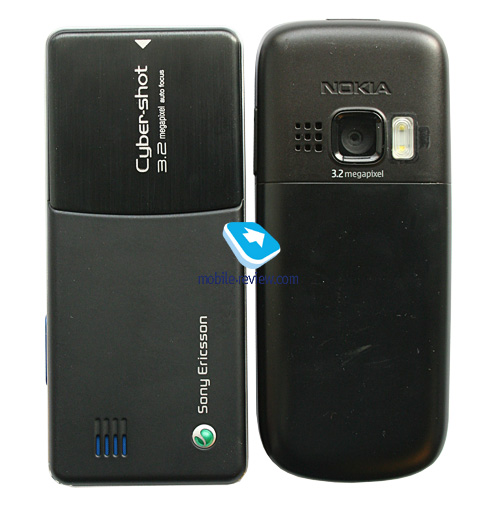
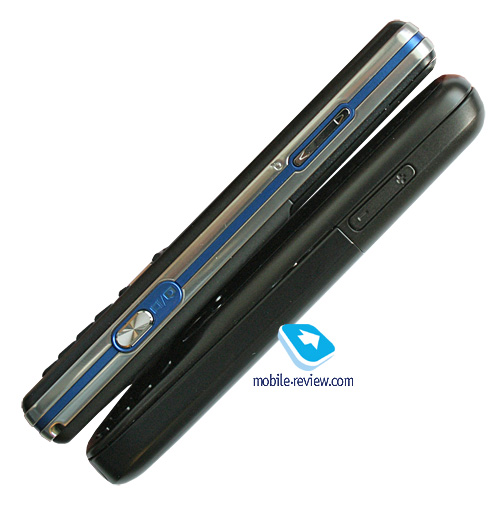
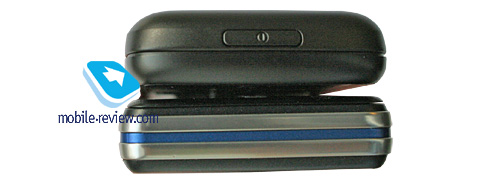
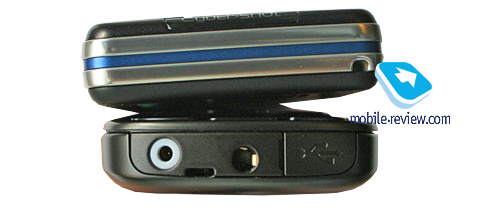
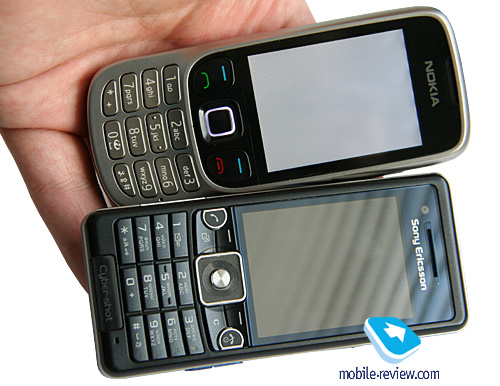

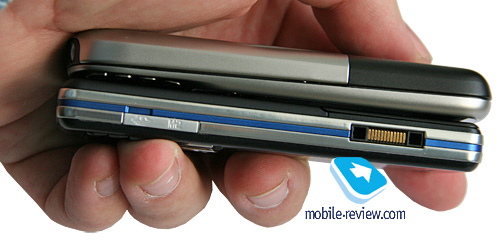
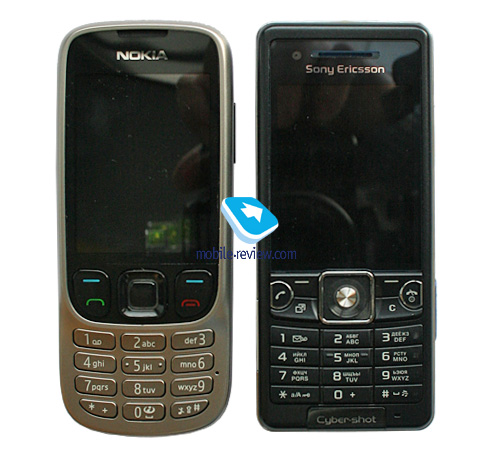
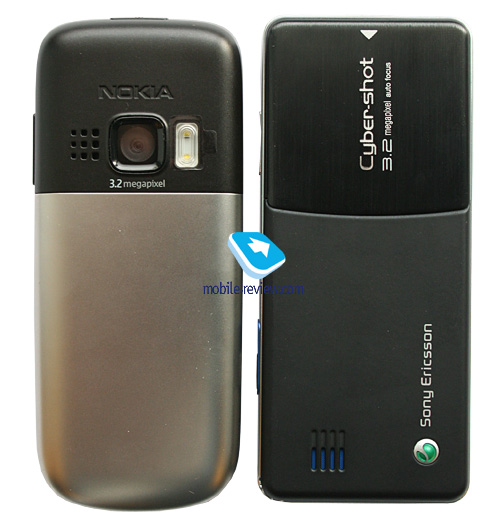
Back to the table of contents >>>
Impressions
The Sony Ericsson C510 offers clear calls, solid reception quality and loud and somewhat shrill ring tones, although they don’t start creaking at the highest volume settings. While it’s not the loudest phone we’ve tested to date, I can’t say I missed any calls with it or ended up out of the coverage in areas where signal was usually strong. The C510’s vibro alert didn’t disappoint either.
Do I find the C510 appealing? Definitely yes, also I like how they position it as a successor to the Sony Ericsson K770i price-wise. It’s quite another matter, though, that both Samsung’s and Nokia’s aggressive pricing policies will require an adequate and swift reaction from Sony Ericsson, i.e. a series of price reductions for the C510. Such a rushed release is rather an attempt to take a bit of this segment before comparable yet cheaper offerings arrive some time in May. For example the Nokia 6303 will retail for 135 Euro against the C510’s 175 Euro price tag, which is quite a margin in this price bracket. As far as the K770 and C510 are concerned, the differences between them come down to design, as both their cameras and feature packs are more or less the same. In this particular case, though, 15 Euro will buy you a newer model with some extra feats that are always welcome.
Based on the way the C510 is positioned, there are all reasons to believe that it will follow in the footsteps of the Sony Ericsson K770i. Its sales will go up as soon as its price hits the level of 145-150 Euro; and it won’t take long – I suppose we should see this early in Q4 2009. On balance, the Sony Ericsson will stick around for a while, being an adequate solution for those who are in the market for an imaging-savvy phone and would also like it to have a lens cover, optimized software and other amenities.
Related links
Back to the table of contents >>>
Eldar Murtazin (eldar@mobile-review.com)
Translated by Oleg Kononosov (oleg.kononosov@mobile-review.com)
Published — 13 February 2009
Have something to add?! Write us... eldar@mobile-review.com
|
News:
[ 31-07 16:21 ]Sir Jony Ive: Apple Isn't In It For The Money
[ 31-07 13:34 ]Video: Nokia Designer Interviews
[ 31-07 13:10 ]RIM To Layoff 3,000 More Employees
[ 30-07 20:59 ]Video: iPhone 5 Housing Shown Off
[ 30-07 19:12 ]Android Fortunes Decline In U.S.
[ 25-07 16:18 ]Why Apple Is Suing Samsung?
[ 25-07 15:53 ]A Few Choice Quotes About Apple ... By Samsung
[ 23-07 20:25 ]Russian iOS Hacker Calls It A Day
[ 23-07 17:40 ]Video: It's Still Not Out, But Galaxy Note 10.1 Gets An Ad
[ 19-07 19:10 ]Another Loss For Nokia: $1 Billion Down In Q2
[ 19-07 17:22 ]British Judge Orders Apple To Run Ads Saying Samsung Did Not Copy Them
[ 19-07 16:57 ]iPhone 5 To Feature Nano-SIM Cards
[ 18-07 14:20 ]What The iPad Could Have Looked Like ...
[ 18-07 13:25 ]App Store Hack Is Still Going Strong Despite Apple's Best Efforts
[ 13-07 12:34 ]Infographic: The (Hypothetical) Sale Of RIM
[ 13-07 11:10 ]Video: iPhone Hacker Makes In-App Purchases Free
[ 12-07 19:50 ]iPhone 5 Images Leak Again
[ 12-07 17:51 ]Android Takes 50%+ Of U.S. And Europe
[ 11-07 16:02 ]Apple Involved In 60% Of Patent Suits
[ 11-07 13:14 ]Video: Kindle Fire Gets A Jelly Bean
Subscribe
|
